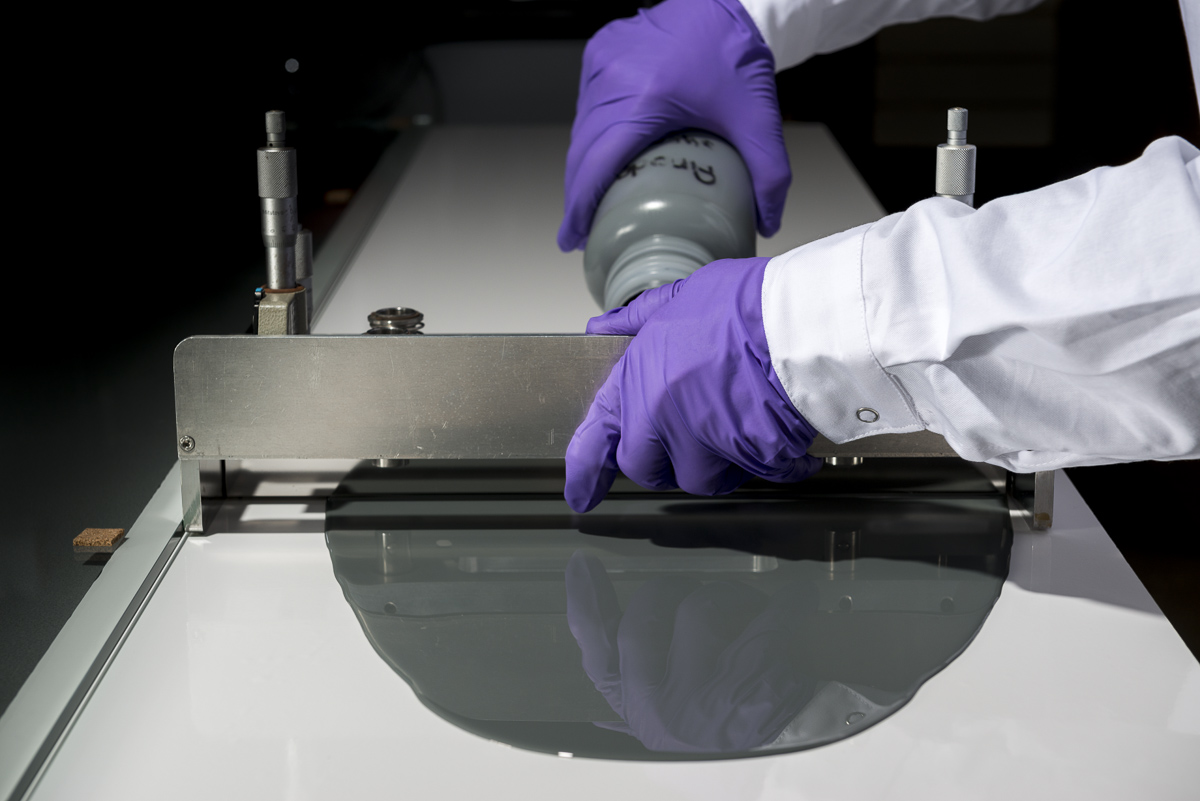

Next steps in Solid Oxide Electrolysis
01-11-2019 | New Project | P2Hydrogen
Developing SOE high-temperature electrolysis and co-electrolysis for industrial value chains.
 VoltaChem researchers are developing the next generation of Solid Oxide Electrolysis (SOE) cells at TNO’s Faraday lab in Petten. SOE technology offers great opportunities for large scale hydrogen production, renewable energy storage and, in particular, for electrification of the chemical industry. A unique feature is the co-electrolysis of steam and carbon dioxide, resulting in the generation of syngas. Operating at high temperatures, the SOE technology has great potential for integration in existing chemical processes facilities.
VoltaChem researchers are developing the next generation of Solid Oxide Electrolysis (SOE) cells at TNO’s Faraday lab in Petten. SOE technology offers great opportunities for large scale hydrogen production, renewable energy storage and, in particular, for electrification of the chemical industry. A unique feature is the co-electrolysis of steam and carbon dioxide, resulting in the generation of syngas. Operating at high temperatures, the SOE technology has great potential for integration in existing chemical processes facilities.
As a European leader on Solid Oxide Fuel Cell development until 2010, ECN (now part of TNO) had state-of-the-art expertise in the development and construction of equipment for manufacturing and testing of solid oxide cells. For two years, in view of the relevance of the technology for the electrification of the chemical industry, these activities have been revived on a small scale within the VoltaChem shared innovation program, now with a focus on applications in electrolysis and co-electrolysis. This has recently received a boost by the establishment of a lab-scale SOE cell manufacturing line within the Faraday lab, based on low-cost manufacturing processes with tape casting and screen-printing techniques. In addition, electrochemical testing facilities for single-cell testing have been developed to assess cell performance and degradation. These facilities, which will be operational from 2020 onwards, are at the heart of a new VoltaChem initiative for joint projects in developing SOE high-temperature electrolysis and co-electrolysis for industrial value chains.
Reverse operation and co-electrolysis
Researchers Frans van Berkel and Claire Ferchaud point out that SOE technology, based on the use of solid ion-conducting ceramics, offers high electrical efficiency and low material cost. "A special feature is that a solid oxide cell can be operated in reverse mode", Ferchaud explains, "so the same device can be used both as an electrolyzer and as a fuel cell. This is quite relevant for its use in the storage of sustainable electricity: a solid oxide cell system can convert excess electricity from renewable energy sources (wind, solar) into hydrogen, and also use hydrogen as a fuel to produce electricity, to feedback to the grid."
To the VoltaChem program, SOE technology is particularly attractive because of the possibility of co-electrolysis. The cell then splits waters into hydrogen and oxygen while at the same time converting carbon dioxide into carbon monoxide at the fuel electrode. Such a co-SOE system thus produces syngas, the mixture of hydrogen and carbon monoxide that features in so many industrial chemical syntheses. "An added benefit ", Frans van Berkel says, "is the tuning of the syngas composition via control of the process parameters of the SOE cell. So it can produce, for instance, a feed for methanol production, but also for a wide range of Fischer-Tropsch hydrocarbon syntheses. It is a flexible technology that can be integrated into a wide range of chemical value chains." Another feature is that SOE systems operate at temperatures from 700 to 1000 degrees, offering the chemical industry opportunities for waste heat management.
Towards high performance and robust systems
Since SOE co-electrolysis has the potential to open a route to non-fossil-based carbon-containing chemicals and fuels, it already receives a lot of attention from the industry. This includes steel mills and cement factories that are searching for ways to lower their carbon footprint by turning their CO2 emissions into feedstock. According to Van Berkel, SOE technology has been demonstrated to a size of around 150 kW in European projects by a joint collaboration of academics, companies, and start-ups of the SOE community. "However," he says, "lifespan issues and associated costs are the remaining weakness of the technology when it comes to implementation on an industrial scale. On the positive side, we are aware of the way to go to make SOE a mature technology. A key challenge is rather severe material degradation, so we are working to improve materials and cell microstructures to deliver more robust systems."
"In February 2020, the new European research project NewSOC will kick-off where we, together with 17 partners in academia and industry, will work on improving SOE cell technology. I think there really is a good outlook on developing high performance and robust SOE systems", Van Berkel says. To which Ferchaud adds that it is equally important to upscale the manufacturing process to larger dimensions and develop low cost and environmental-friendly additive manufacturing processes. "I think the recent developments at the Faraday lab and VoltaChem program now put us in a good position to deliver a competitive technology for large scale SOE systems."
Are you interested in developing electrolyzer technology?
Then join the VoltaChem community-of-practice Power-2-Hydrogen, or participate in technology development projects VoltaChem is preparing for 2020. For that you can always contact our business development manager Lennart van der Burg of Power-2-Hydrogen.
Share this page:
